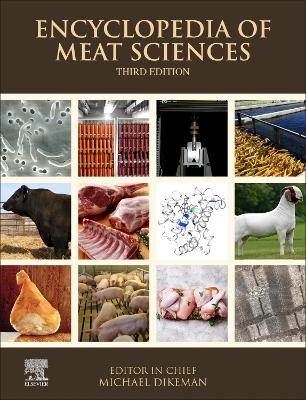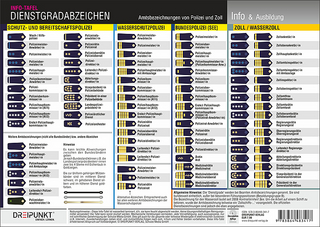
Encyclopedia of Meat Sciences
Academic Press Inc
978-0-323-85125-1 (ISBN)
New to this third edition are chapters covering the core scientific advancements of recent years, including gene editing of animals, sustainability and zoonotic diseases. In addition, the book introduces a templatized chapter approach, thus providing consistency to the entire work and maximizing the clarity and accessibility of its content for the reader. Chapters, once again, include a variety of images, charts, graphs, and/or diagrams to enhance the text.
Michael E. Dikeman; Born in the state of Kansas, USA. Received B.S. and Ph.D. degrees from Kansas State University and M.S.degree from Michigan State University. Professor at Kansas State University from 1970 to present. He teaches courses ranging from beginning animal/meat science to graduate level. His research interests include effects of genetics and management systems for livestock production on carcass composition and meat quality. He has particular interests in postmortem technology to enhance meat quality, and in effects of meat cookery on tenderness. He received the Meats Research Award from the American Society of Animal Science. He served as President of the American Meat Science Association, and the Federation of American Societies of Food Animal Sciences.
1. Species of “farmed and/or “harvested ruminant animals (cattle, sheep, goats, and deer) and production and management systems – breeds and animal breeding, nutrition, transportation, sustainability, biomethane production, antibiotic use.2. Species of “farmed and/or “harvested non ruminant animals (swine, poultry, fish/seafood) – genetics and genomics, nutrition, stunning and harvesting, diet/health issues of meat produced, diseases of major concern.3. Animal, poultry, and fish growth and composition – growth patterns, growth promotants, muscular hypertrophy, muscle and adipose tissue growth, efficiency, physiology 4. Meat preservation – freezing, canning, salting and smoking, fermentation, irradiation.5. Comminuted meat products – batters and emulsions, curing agents, types of sausages, functional ingredients, ethnic products, safety, diet/health concerns6. Intact muscle products – curing and smoking, packaging, safety, injection enhancement, labeling, ethnic products7. Laboratories and instrumentation – physical and chemical analyses, proteomic technology, lab accreditation, drug residues, tenderness prediction instruments8. Chemical and Physical characteristics of meat – color and pigment, pH measurement, protein functionality, glycogen and glycolysis, conversion of muscle to meat9. Meat Safety – HACCP, food borne zoonosis, microorganism contamination, animal health risk analysis, government regulations, emerging pathogens, parasites10. Societal issues – animal well-being, sustainability, environmental impact of meat production, traceability, labeling, diet/health concerns, organic vs conventional production11. Professional societies and industry/trade organizations; research and educational institutions; animal rights and welfare organizations 12. Meat palatability – flavor development, warmed-over flavor, tenderness, cooking, cultural and ethnic preferences
| Erscheint lt. Verlag | 1.11.2023 |
|---|---|
| Verlagsort | Oxford |
| Sprache | englisch |
| Maße | 216 x 276 mm |
| Gewicht | 1000 g |
| Themenwelt | Schulbuch / Wörterbuch ► Lexikon / Chroniken |
| Technik ► Lebensmitteltechnologie | |
| Weitere Fachgebiete ► Land- / Forstwirtschaft / Fischerei | |
| ISBN-10 | 0-323-85125-8 / 0323851258 |
| ISBN-13 | 978-0-323-85125-1 / 9780323851251 |
| Zustand | Neuware |
| Haben Sie eine Frage zum Produkt? |
aus dem Bereich


